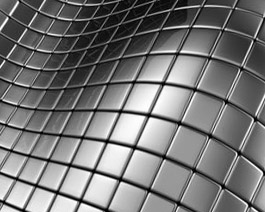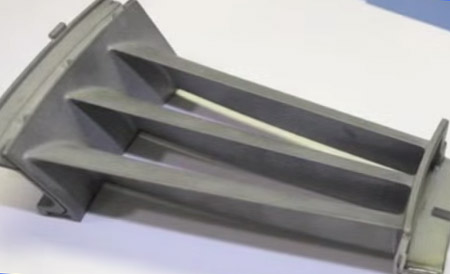Nickel welding is performed using one of the many available nickel alloys.
Arc welding can be used including Stick, MIG and TIG processes.
Using stick welding in particular will create a weld stronger than the base metal.
When using TIG welding, the weld process is shielded with argon gas.
TIG requires a 2% thoriated tungsten electrode, which can be used in any position.
For nickel Mig welding, the shielding gas is a 50/50 helium and argon mix. Mig can also be used in any position.
Nickel Welding
Nickel alloys can, for the most part, be welded with the same processes used for carbon steel.
Oxyacetylene welding is preferred to metal arc in some cases.
This is true in welding on thin wall pipe or tubing, and tin gauge strip where the arc would penetrate the material. It is also preferred on some high carbon steels because of the lower weld hardening results.
You can also use stick welding for welds stronger than the base metal.
TIG welding uses 2% thorlated tungsten electrode and argon as the shielding gas.
TIG welds can be used to weld nickel-based alloy in any position.
For MIG welding, use a 50/50 argon/helium mix for shielding. You can also weld using any position.
Joint Design
Corner and lap joints are satisfactory where high stresses are not to be encountered. Butt joints are used in equipment such as pressure vessels. Beveling is not required for butt joints in material 0.050 to 0.125 in. (1.270 to 3.175 mm) thick. In thicker material, a bevel angle of 37.5 degrees should be made. For sheets 0.43 in. (10.92 mm) and thinner, both butt and corner joints are used. Corner joints are used for thicknesses of 0.037 in. (0.940 mm) and heavier.
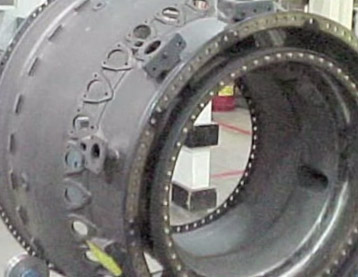
Fluxes
Flux is not required when welding nickel. However, it is required for Monel and Inconel. The fluxes are used preferably in the form of a thin paste made by mixing the dry flux in water for Monel. A thin solution of shellac and alcohol (approximately 1.0 lb (0.45 kg) of shellac to 1.0 gal (3.8 1) of alcohol) is used for Inconel. For welding K Monel, a flux composed of two parts of Inconel flux and one part of lithium fluoride should be used. The flux is applied with a small brush or swab on both sides of the seam, top and bottom, and on the welding rod.
Welding Rods
Welding rods of the same composition as the alloy being welded are available. Rods of the same composition are necessary to insure uniform corrosion resistance without galvanic effects. In some cases, a special silicon Monel rod is used for welding nickel.
One excellent brazing rod option for joining nickel to itself or to other metals such as iron, steel, copper, bronze and brass is the HTS-528 Brazing Rod.
Cleaning
All oil, dirt, and residues must be removed from the area of the weld by machining, sandblasting, grinding, rubbing with abrasive cloth, or chemically by pickling.
If they are cleaned and greased properly they will come out a shiny gold color.
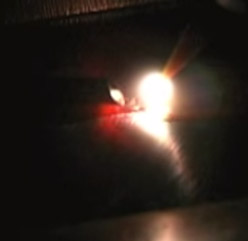
Application
A slightly reducing flame should be used. There is a slight pressure fluctuation in many oxygen and acetylene regulators. The amount of excess acetylene in the flame should be only enough to counteract this fluctuation and prevent the flame from becoming oxidizing in nature.
The tip should be the same size or one size larger than recommended by torch manufacturers for similar thicknesses of steel. The tip should be large enough to permit the use of a soft flame. A high velocity of harsh flame is undesirable.
The parts to be welded should be held firmly in place with jigs or clamps to prevent distortion.
Once started, welding should be continued along the seam without removing the torch from the work. The end of the welding rod should be kept well within the protecting flame envelope to prevent oxidation of the heated rod. The luminous cone tip of the flame should contact the surface of the molten pool in order to obtain concentrated heat. This will also prevent oxidation of the molten metal. The pool should be kept quiet and not puddled or boiled. If surface oxides or slag form on the surface of the molten metal, the rod should be melted into the weld under this surface film.
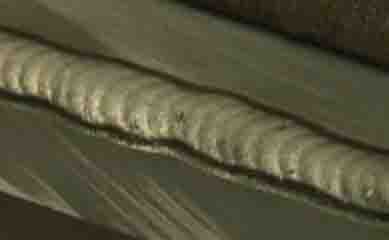
Tips for Welding Nickel Alloys
- No matter what nickel welding process is used, limit heat input
- Nickel alloys require less amperage than stainless steel
- Nickel alloys are not very thermal conductive so heat builds up quickly
- Let the weld cool between passes or beads
- For Tig welding, use gas lens or even oversize cups to provide better shielding
- Clean the surfaces before nickel welding and between passes
- Keep the hot tip of the Tig filler wire shielded with argon to avoid oxidation. Snip the tip if it gets crapped up.
- For root passes and full penetration welds, shield the back side with argon too
- Nickel alloys are used for nickel welding rods and filler metals for cladding other less corrosive and heat resistant metals
- Nickel will not harden from quick cooling
- Some nickel alloys are heat treatable by age hardening. They harden by being held at elevated temperatures for extended periods of time
Nickel Soldering
Soft soldering can be used for joining nickel and high nickel alloys only on sheet metal not more than 1/16 in. (1.6 mm) thick and only for those applications where the solder is not readily corroded.
Soft solder is inherently of low strength.
Joint strength must be obtained by rivets, lock seams, or spot welding, with soft solder acting as a sealing medium.
The 50-50 and 60-40 percent tin-lead solders are preferred for joining metals of this type.
The flux used for nickel and Monel is a zinc saturated hydrochloric (muriatic) acid solution. Inconel requires a stronger flux because of its chromium oxide film. All flux and flux residues must be removed from the metal after the soldering operation is completed.
Surfaces of metal parts to be soft soldered must be free from dirt, surface oxide or other discoloration. Where possible, the surfaces to be joined should be tinned with solder to ensure complete bonding during the final soldering operation.
